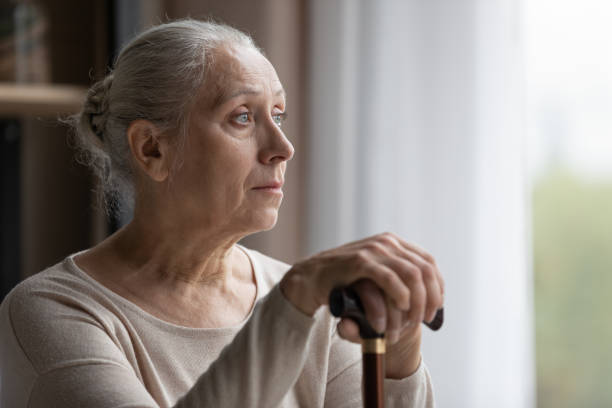Parkinson’s disease (PD) is a progressive neurological disorder that primarily affects movement. The journey for seniors diagnosed with this condition can be challenging, but therapeutic approaches can significantly enhance their quality of life. There are ways to manage symptoms and maintain independence, from physical therapy to innovative medical treatments. This blog explores practical therapeutic strategies for seniors coping with PD.
Contents
- 1 Understanding Parkinson’s Disease
- 2 Physical Therapy: A Vital Component
- 3 Speech and Occupational Therapy
- 4 The Role of Medication
- 5 Deep Brain Stimulation: A Surgical Option
- 6 Emotional and Mental Well-being
- 7 Nutrition and Lifestyle Adjustments
- 8 Technology and Innovations
- 9 Building a Support Network
- 10 Wrapping Up
Understanding Parkinson’s Disease
Tremors, stiffness, slowness of movement, and balance issues characterize Parkinson’s disease. These symptoms stem from the degeneration of dopamine-producing neurons in the brain. While the exact cause of Parkinson’s remains unknown, age is a significant risk factor, making seniors the most affected demographic.
Living with Parkinson’s doesn’t mean resigning to a diminished lifestyle. A proactive approach involving therapies and lifestyle changes can empower seniors to take charge of their health and live fuller, more engaged lives.
Physical Therapy: A Vital Component
Physical therapy is one of the most effective ways to manage Parkinson’s symptoms. Tailored exercises can improve flexibility, strength, and balance, reducing the risk of falls—a common concern among seniors.
Recommended Activities:
- Stretching: Enhances muscle flexibility and reduces stiffness.
- Balance Training: Helps seniors maintain stability while walking or standing.
- Resistance Training: Builds muscle strength to support motor function.
Group exercise classes, such as dance or tai chi, designed for individuals with Parkinson’s, also provide a social outlet and boost morale.
Speech and Occupational Therapy
Parkinson’s disease often affects speech, swallowing, and daily activities. Speech-language therapists work to improve communication and address swallowing difficulties through targeted exercises.
Occupational therapy focuses on maintaining independence in daily tasks, from dressing to cooking. Adaptive tools like weighted utensils or button hooks can make life more manageable.
The Role of Medication

Medications play a critical role in managing Parkinson’s symptoms. The most commonly prescribed drug, Levodopa, replenishes dopamine levels, improving motor symptoms. Other medications, such as dopamine agonists and MAO-B inhibitors, can complement treatment.
Seniors need to work closely with their healthcare providers to monitor these medications’ effectiveness and side effects. As Parkinson’s progresses, adjustments to the medication regimen may be necessary.
Deep Brain Stimulation: A Surgical Option
Deep brain stimulation (DBS) offers an alternative for seniors whose symptoms are not well-managed by medication. This surgical procedure involves implanting electrodes in the brain to regulate abnormal signals. DBS has been shown to improve tremors, rigidity, and slowness of movement, significantly enhancing the quality of life for some patients.
Emotional and Mental Well-being
Coping with Parkinson’s is not just a physical journey but an emotional one. Depression, anxiety, and feelings of isolation are common among seniors with the disease. Emotional support is crucial to maintaining mental well-being.
Strategies for Emotional Health:
- Counseling: Individual or group therapy can provide a safe space to express feelings.
- Support Groups: Connecting with others facing similar challenges fosters a sense of community.
- Mindfulness and Relaxation: Practices such as meditation and yoga can reduce stress and improve mood.
Caregivers and family members play an essential role in providing emotional support. Their understanding and encouragement can significantly impact a senior’s outlook on life.
Nutrition and Lifestyle Adjustments
Diet and lifestyle changes can help seniors manage Parkinson’s symptoms more effectively.
Key Nutritional Tips:
- Increase Fiber Intake: Reduces constipation, a common non-motor symptom of Parkinson’s.
- Stay Hydrated: Promotes overall health and aids in medication absorption.
- Antioxidant-rich Foods: May support brain health.
A balanced diet tailored to individual needs ensures that seniors maintain their strength and energy levels.
Technology and Innovations
Emerging technologies are revolutionizing the way we cope with Parkinson’s disease. Mobile apps and wearable devices are now available to track symptoms, remind patients to take medications, and even guide them through exercises. Virtual reality therapies are also gaining traction, offering immersive ways to improve balance and coordination. These innovations bring hope and optimism to the management of Parkinson’s.
Building a Support Network
A robust support system is not just beneficial; it’s vital for seniors managing Parkinson’s disease. Family, friends, healthcare professionals, and community resources can work together to provide comprehensive care. Encouraging open communication and sharing responsibilities among caregivers can prevent burnout and ensure better support for the senior, fostering a sense of connection and reducing feelings of isolation.
Wrapping Up
Coping with Parkinson’s disease as a senior can feel overwhelming, but with the right therapeutic approaches, it is possible to lead a fulfilling life. From physical and occupational therapy to emotional support and medical advancements, a multi-faceted strategy empowers seniors to manage their symptoms and maintain independence.
By embracing these therapeutic options and building a strong support system, seniors with Parkinson’s can focus on what matters most: living a meaningful and enriching life.
